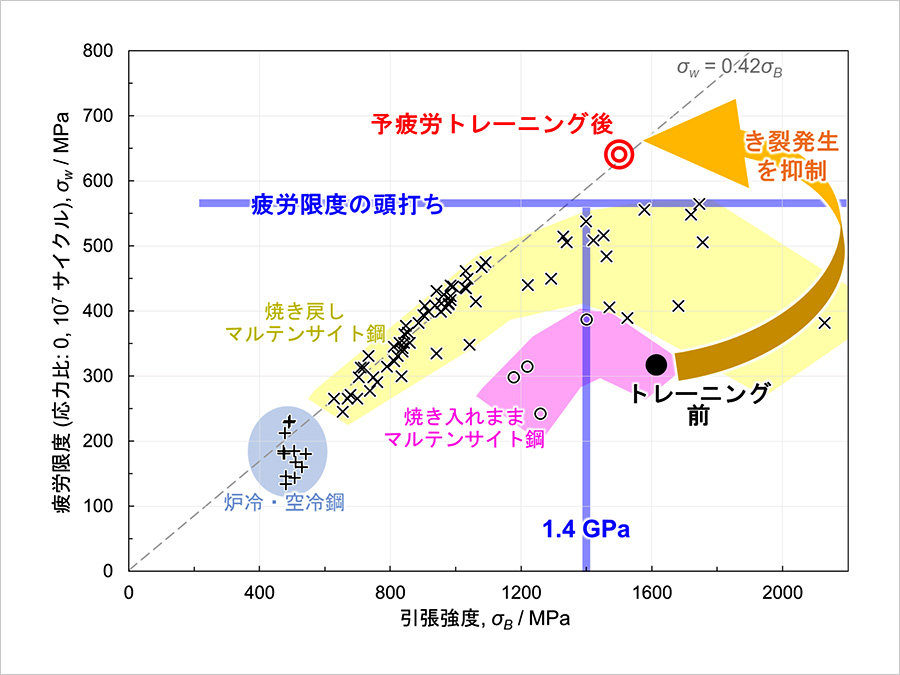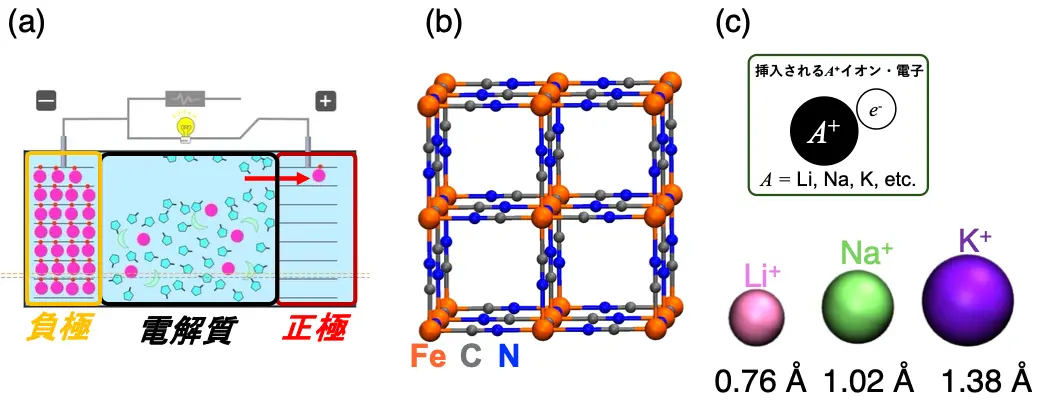2025-06-30 物質・材料研究機構,科学技術振興機構

図: 鉄鋼材料の引張強度と疲労限度の相関
<関連情報>
- https://www.nims.go.jp/press/2025/06/202506300.html
- https://www.nims.go.jp/press/2025/06/oldo0i0000008law-att/202506300.pdf
- https://advanced.onlinelibrary.wiley.com/doi/10.1002/advs.202504165
クラック・エンブリオ・エンジニアリングによる高強度マルテンサイト鋼の疲労限界倍増-サイクリック・トレーニング駆動の自己最適化 Fatigue Limit Doubling in High-Strength Martensitic Steel through Crack Embryo Engineering–Cyclic-Training-Driven Self-Optimization
Kazuho Okada, Kaneaki Tsuzaki, Eri Nakagawa, Akinobu Shibata
Advanced Science Published: 29 June 2025
DOI:https://doi.org/10.1002/advs.202504165
Abstract
Achieving superior fracture resistance under cyclic loading–specifically, a high-fatigue limit–is crucial for ensuring structural safety and supporting a sustainable society. This study demonstrates a breakthrough in overcoming the conventional fatigue limit ceiling in high-strength as-quenched martensitic steel by enhancing resistance to crack initiation. In the as-heat-treated state, high-angle boundaries with large elastic misfits and plastic incompatibility served as precursory sites for intrusions/extrusions (these are defined as “crack embryos”), eventually leading to fatigue crack initiation. Remarkably, after the pre-fatigue training, surface crack initiation is entirely suppressed, doubling the fatigue limit with minimal change in tensile strength. A novel concept of “crack embryo engineering” is introduced, which targets the prevention of crack embryo formation by extracting intrinsic microstructural self-optimization against fatigue deformation: macroscopic hardness homogenization and selective nano-hardening of the precursory sites. This self-optimization strategy offers a versatile approach to improving fatigue limit in general steels, providing an effective alternative to tempering heat treatment that inevitably sacrifices tensile strength.



